
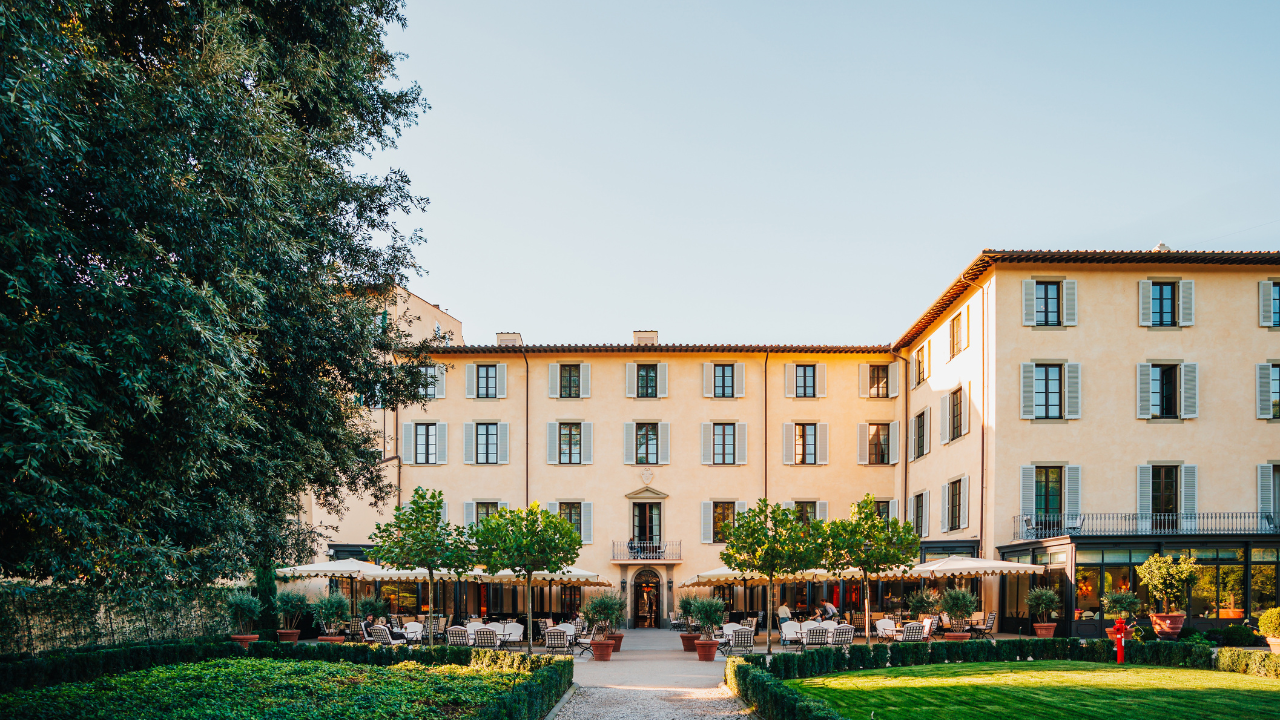
If Florence is a painting, the Four Seasons Firenze is the gilded frame that holds it all together — extravagant, a touch self-aware, and entirely unforgettable.
I arrived one soft, peach-gold afternoon, my taxi slowing before the iron gates of Palazzo della Gherardesca, where bougainvillea brushed against centuries-old stone and a porter greeted me as though I’d just returned from a long voyage rather than Charles de Gaulle Airport. Inside, the hush is instant. The chaos of Florence — the clatter of espresso cups, the selfie-stick symphony outside the Duomo — dissolves. What remains is quiet, frescoed perfection.
This isn’t a hotel so much as a diorama of Florentine history. The walls, painted in the 17th century, once belonged to the Medici-adjacent Scala and Della Gherardesca families. Later, the Palazzo del Nero, once a convent, was annexed to the estate. Even the bathrooms come with a past life — a former railroad office, if you can believe it — now dressed in enough marble to make Michelangelo reconsider his career path.
The Four Seasons brand has long perfected the art of global sameness — a kind of cultivated ubiquity — but Florence resists uniformity. Here, the DNA reads differently. The staff still bow and whisper, “Welcome home,” but it feels less scripted. The air smells faintly of Santa Maria Novella bath products and lemon leaves from the garden. It’s grand, yes — but also disarmingly human.
The Art of Arrival
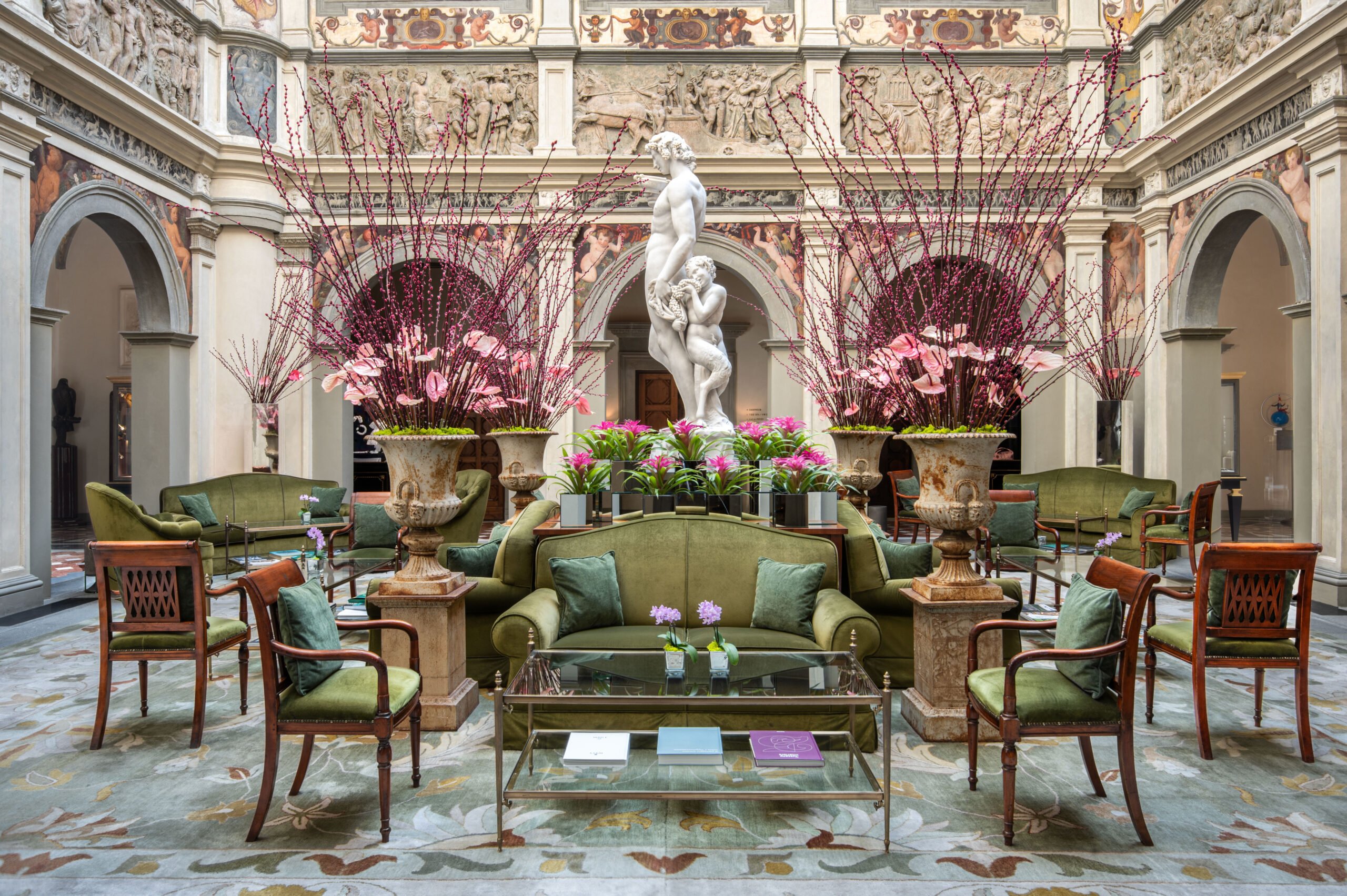
Every great hotel has a thesis, and this one’s is clearly beauty as continuity. My suite was all cream silk and ruby reds, hand-painted panels, and just enough gold leaf to stop short of kitsch. The ceiling was frescoed with a celestial scene — cherubs orbiting lazily above my laptop charger — and I felt, briefly, like a mildly underdressed Medici.
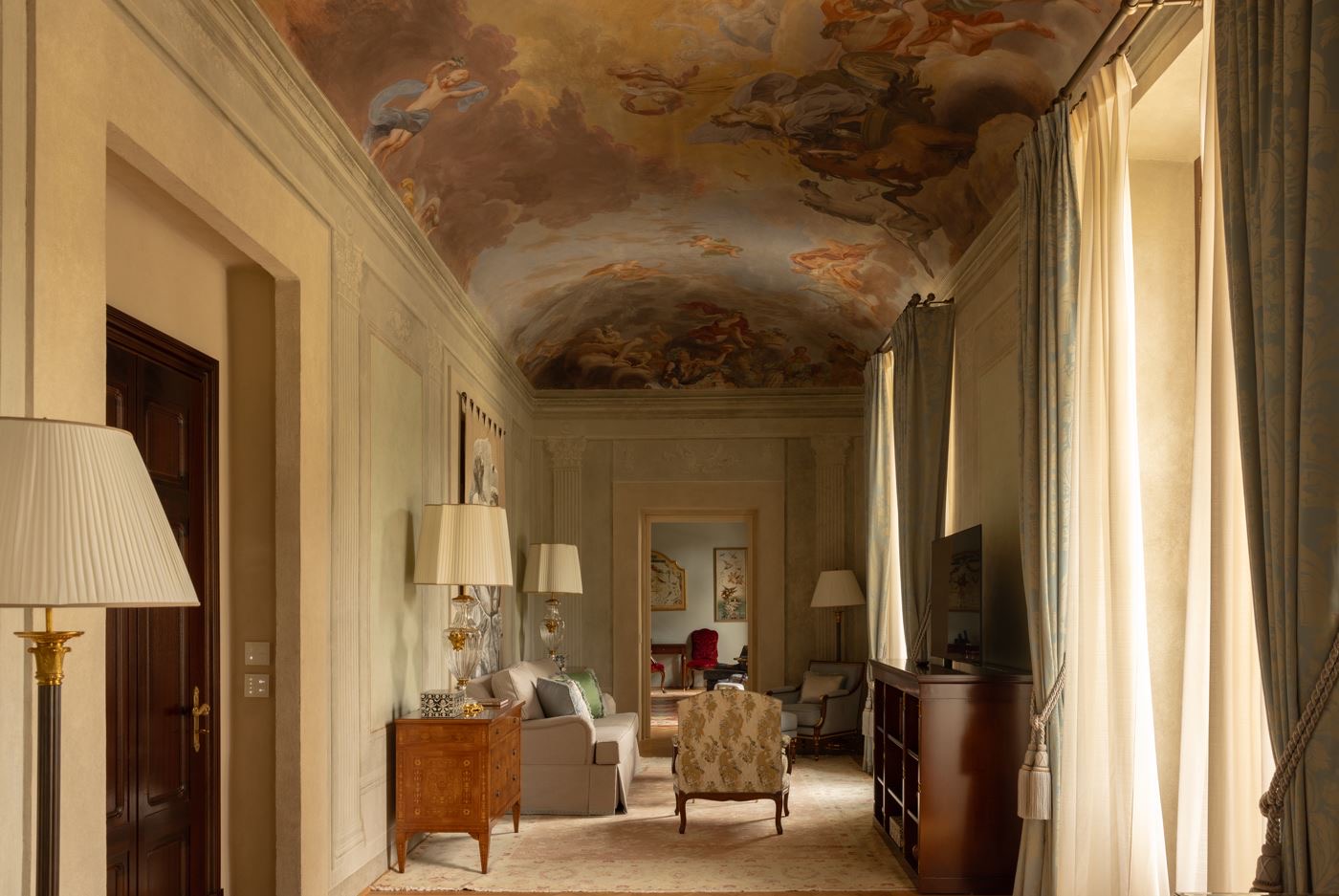
The Santa Maria Novella amenities in the bathroom deserve their own sonnet: the iris-scented shampoo, the bergamot body wash, the soap so decadently perfumed you consider pocketing it (but don’t, because even the idea feels gauche here).
A Garden That Refuses to Behave Like a City
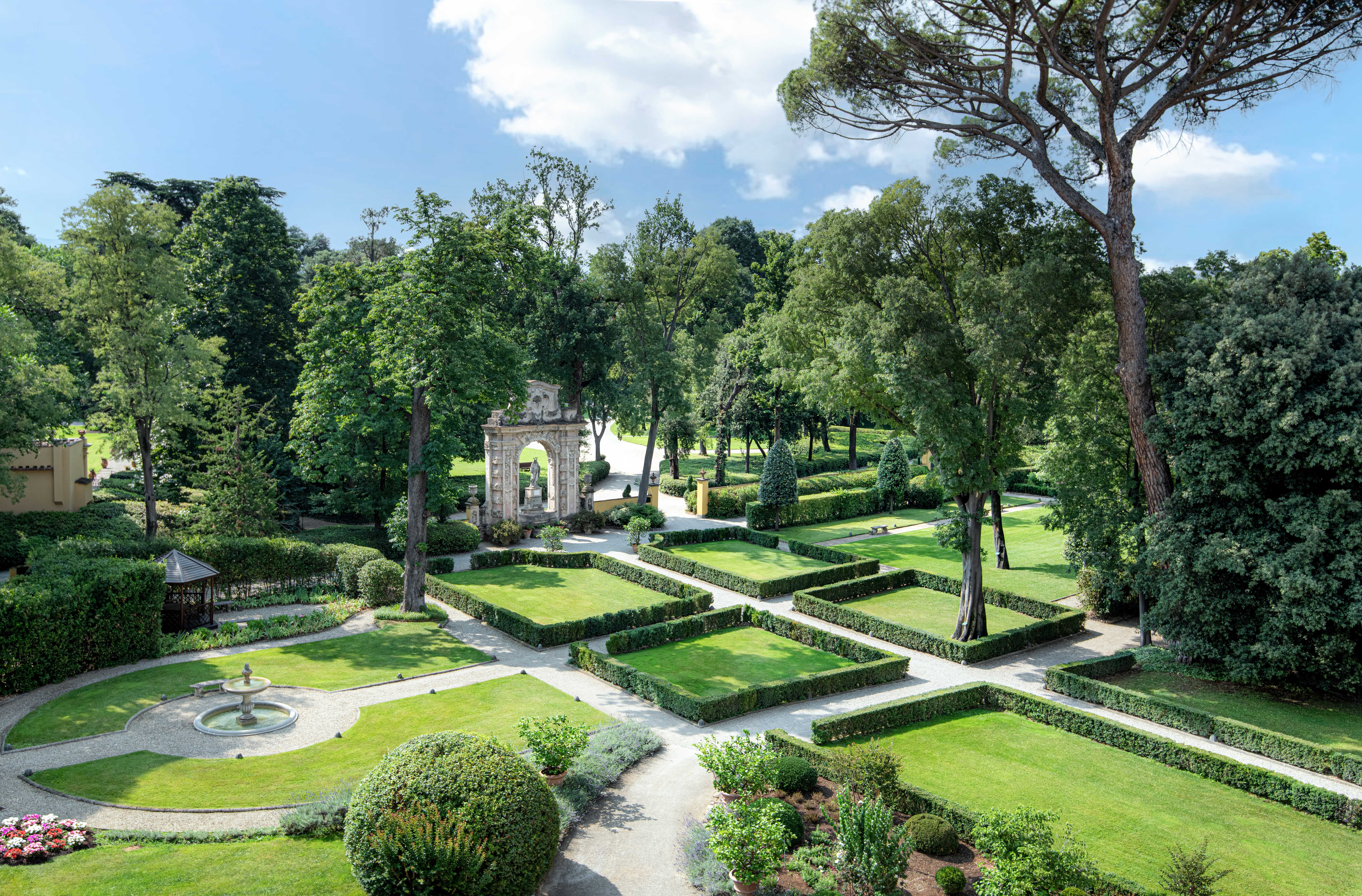
Step outside and you’re no longer in Florence. You’re in the Giardino della Gherardesca, 11 acres of pure, cultivated serenity — statues, fountains, and sequoias so old they’ve outlived dynasties. It’s an oasis disguised as a botanical hallucination, and wandering through it at dusk is like discovering a lost narrative between art and nature.
Once a Medici playground — and later a romantic English garden — it’s now a private Eden accessible only to hotel guests. Couples in linen stroll under canopies of ivy. A man in a Loro Piana polo reads Dante by a marble nymph. A waiter glides past with Negronis balanced on a silver tray. It’s all terribly cinematic, the kind of scene that makes you wonder why you didn’t pack a silk scarf.
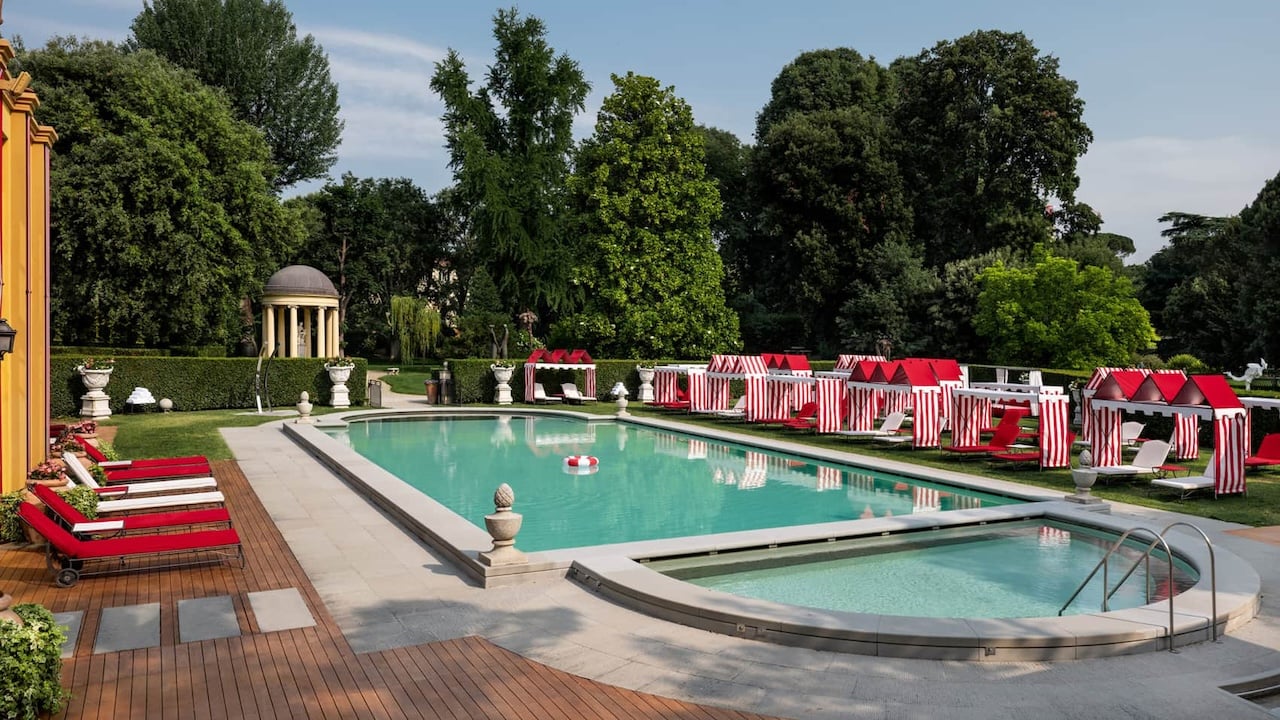
This is also where you’ll find Bagno Al Fresco — the Four Seasons’ answer to the Italian seaside fantasy. Red-and-white cabanas line the pool, striped umbrellas flutter, and suddenly you’re no longer in Florence but on holiday with Slim Aarons. It’s unabashedly glamorous — a tongue-in-cheek wink to Tuscan lido life, complete with poolside pizza and Aperol spritzes.
Florentine Fashion, Without Leaving the Grounds
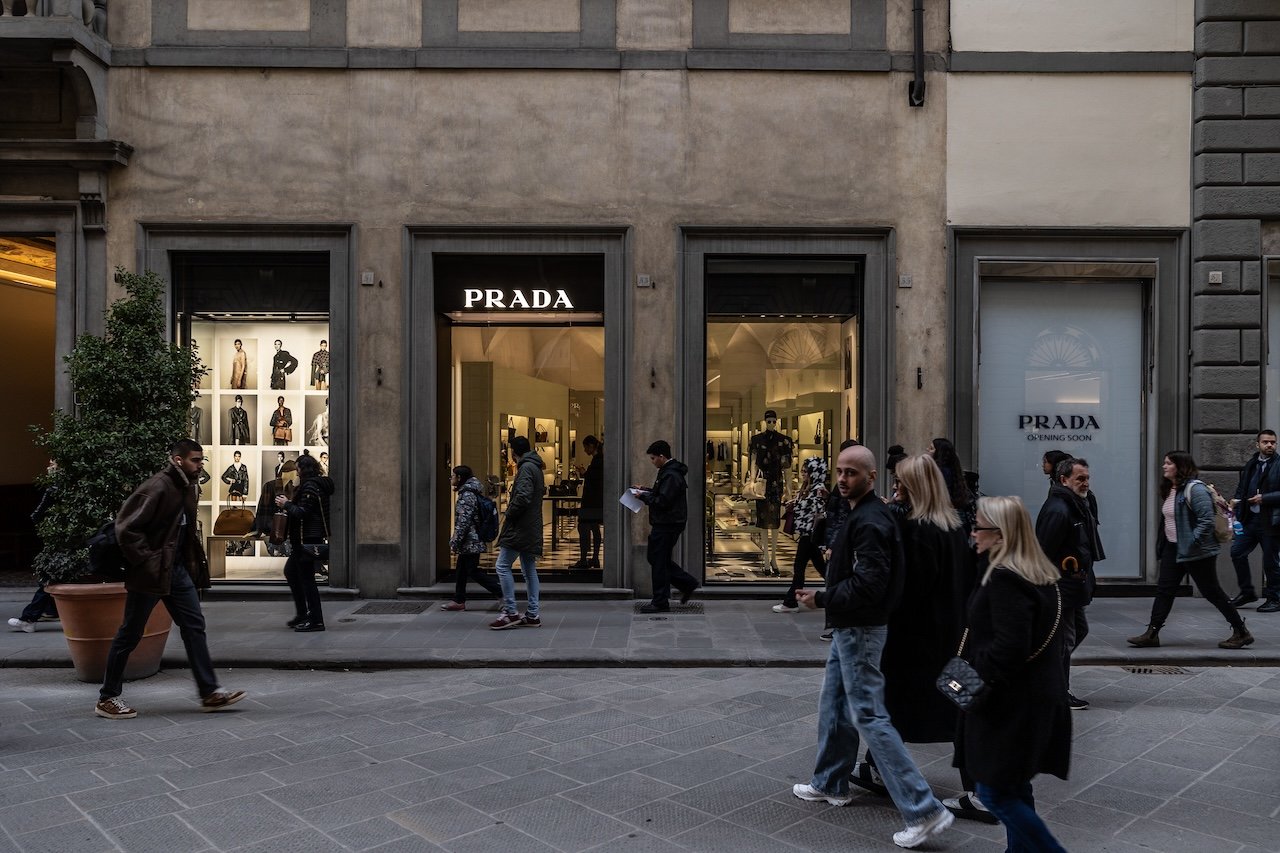
If you can’t make it down Via de’ Tornabuoni — Florence’s own golden mile of retail — you don’t need to.
The Four Seasons Firenze has quietly become its own mini luxury arcade, home to boutiques by Prada, Miu Miu, and more labels, tucked discreetly between frescoed corridors and the garden walkways. It’s retail therapy reimagined — less shopping spree, more patronage with panache.
Dining: From Michelin to Disco
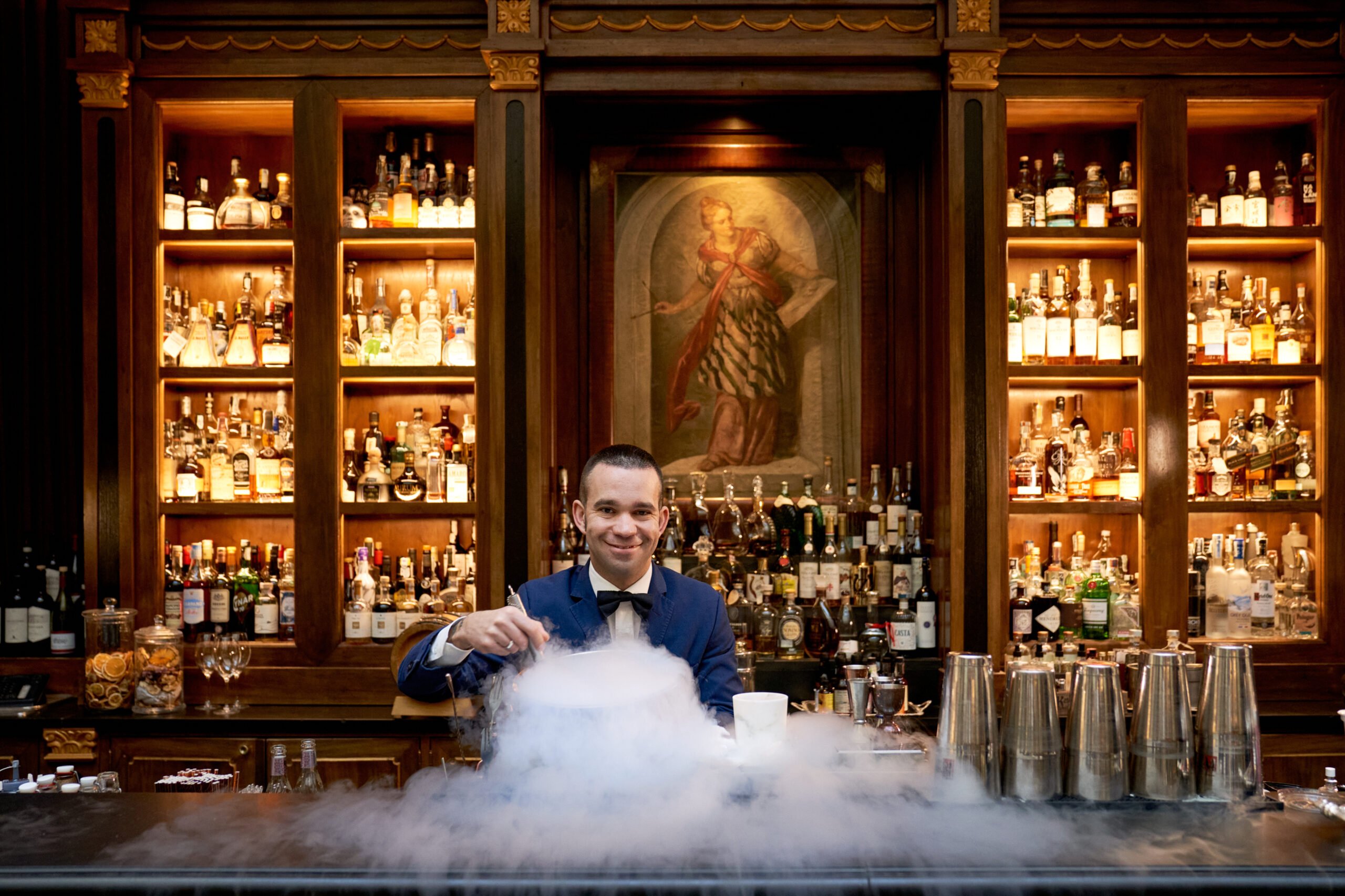
You could, theoretically, never leave the grounds and still eat your way through a dozen versions of Tuscan cuisine.
Il Palagio, the Michelin-starred flagship, is Florence distilled: refined but grounded, like a perfectly tailored linen suit. The risotto arrives the color of sunlit straw, perfumed with saffron and Parmesan air. The sommelier speaks in parables.
For something less solemn, the Atrium Bar offers a divine Salade Niçoise and the house signature: the Vintage Negroni, aged in oak barrels until it tastes like Florence in liquid form — bitter, beautiful, and slightly excessive.
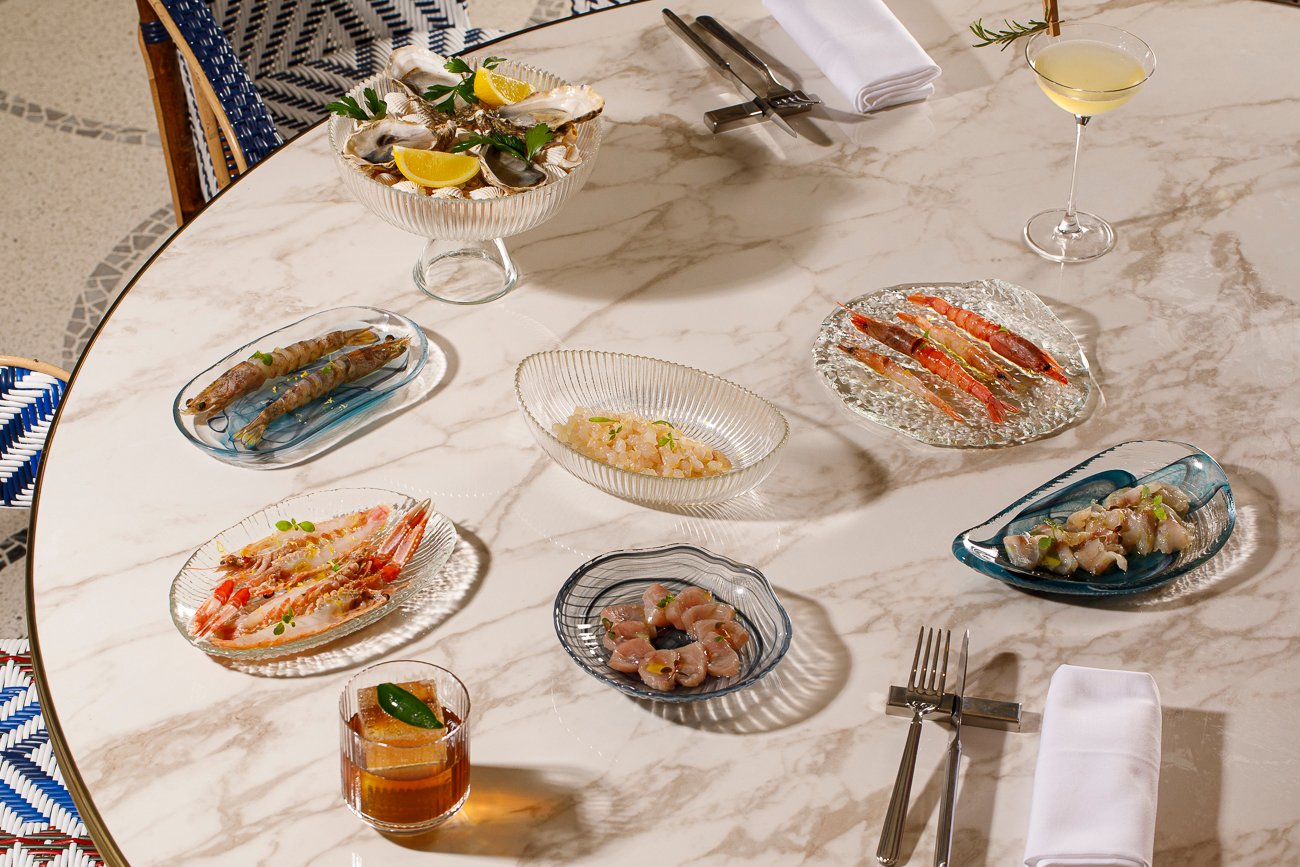
Across the garden, in the newly reborn Palazzo del Nero, the hotel’s other personality emerges: Onde, a seafood trattoria with DJ sets that feel delightfully subversive in a Renaissance setting. Picture a dining room pulsing softly to remixed Mina tracks while waiters ferry oysters and gin cocktails. It’s playful and contemporary — the kind of place where the crowd leans in, conversations deepen, and Florence, for a moment, feels electric.
When the party spills over, it lands at Bar Berni, the vermouth bar next door — a low-lit, high-gloss space made for flirting, lingering, and pretending you don’t have a 9 A.M. Uffizi reservation.
The Spa: Renaissance Revised

Even the spa has a sense of theater. The treatments use Santa Maria Novella products, naturally, and the JetPeel facial promises “luminosity and lift.” I opted for the deep tissue massage. My therapist moved like choreography — each gesture as deliberate as a brushstroke. At one point, she whispered, “Your shoulders are storing the Duomo,” which felt accurate.
Afterwards, I floated between sauna and steam, the air perfumed with iris oil, the garden beyond shimmering through glass. It’s the kind of spa that doesn’t need to tell you you’re glowing; it simply assumes you will be.
Outside the Gates: Florence Unfiltered
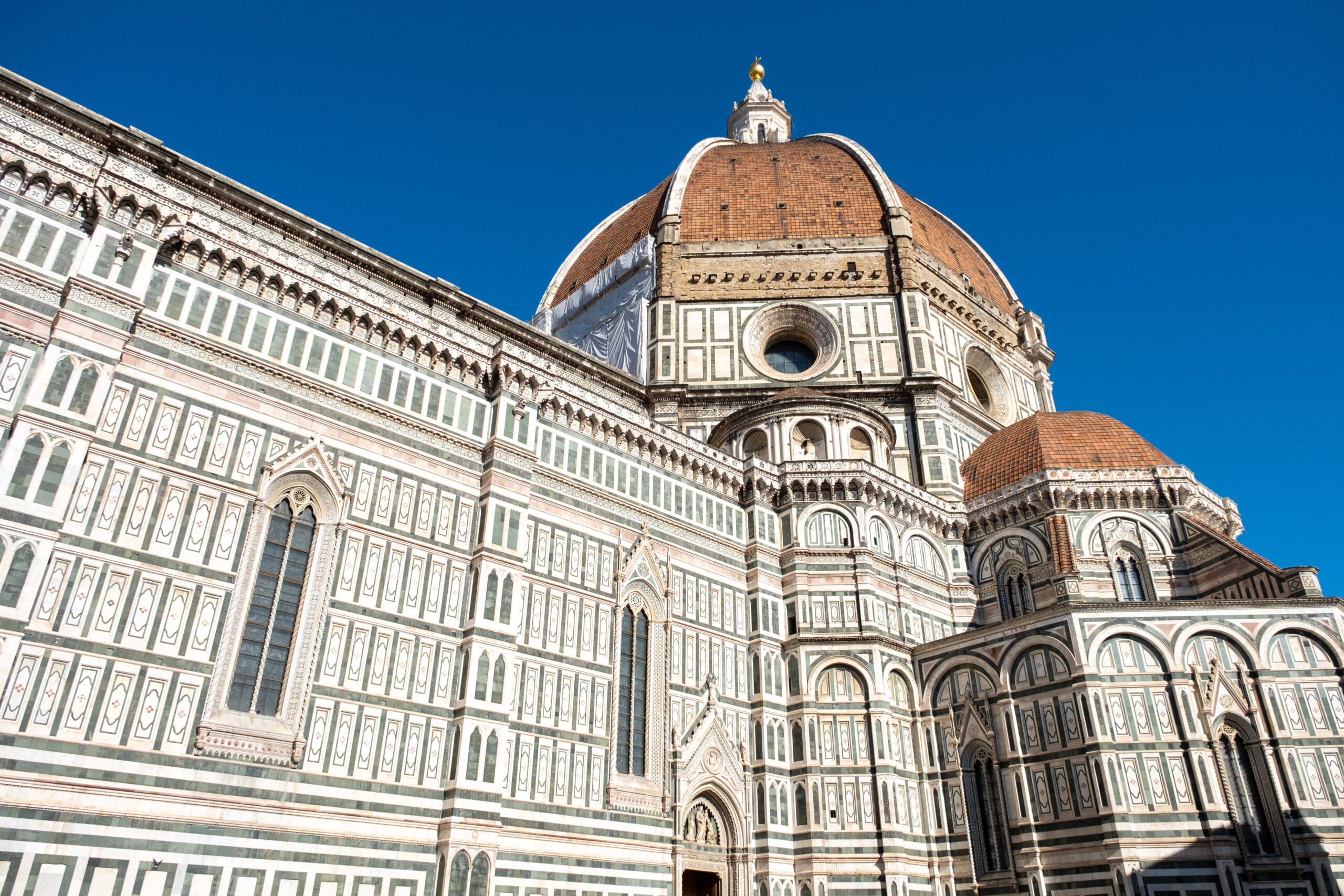
Still, Florence calls — and no one stays cocooned forever. Step beyond the Four Seasons and you’re back in the Renaissance in motion. Start with Michelangelo’s David at the Galleria dell’Accademia; no matter how many times you’ve seen it online, in person, it still hits like revelation. Wander through the Uffizi until your feet stage a revolt, then duck into Al’ Antico Vinaio — an unassuming spot on Via dei Neri where the panini speak louder than the crowds. Order the La Favolosa: porchetta, pecorino, and truffle spread, all for five euros — culinary democracy at its finest.
When night falls, skip the predictable trattorias and head to Locale Firenze. Tucked inside a 13th-century palazzo once belonging to the Concini family, the restaurant is part history lesson, part fever dream. The restaurant unfolds across multiple levels — from vaulted Renaissance halls to a subterranean cellar that once sat at sea level in 28 B.C. The cocktail bar glows like candlelight on marble, and the menu walks a tightrope between traditional and avant-garde: rabbit tortelli with saffron butter, sea bass tartare under glass smoke.
It’s not just a restaurant; it’s a mood board of modern Florence — sensual, irreverent, and cinematic. I left thinking: if Brunello Cucinelli doesn’t host a Pitti Uomo after-party here soon, someone’s missing a press opportunity.
Service & Society
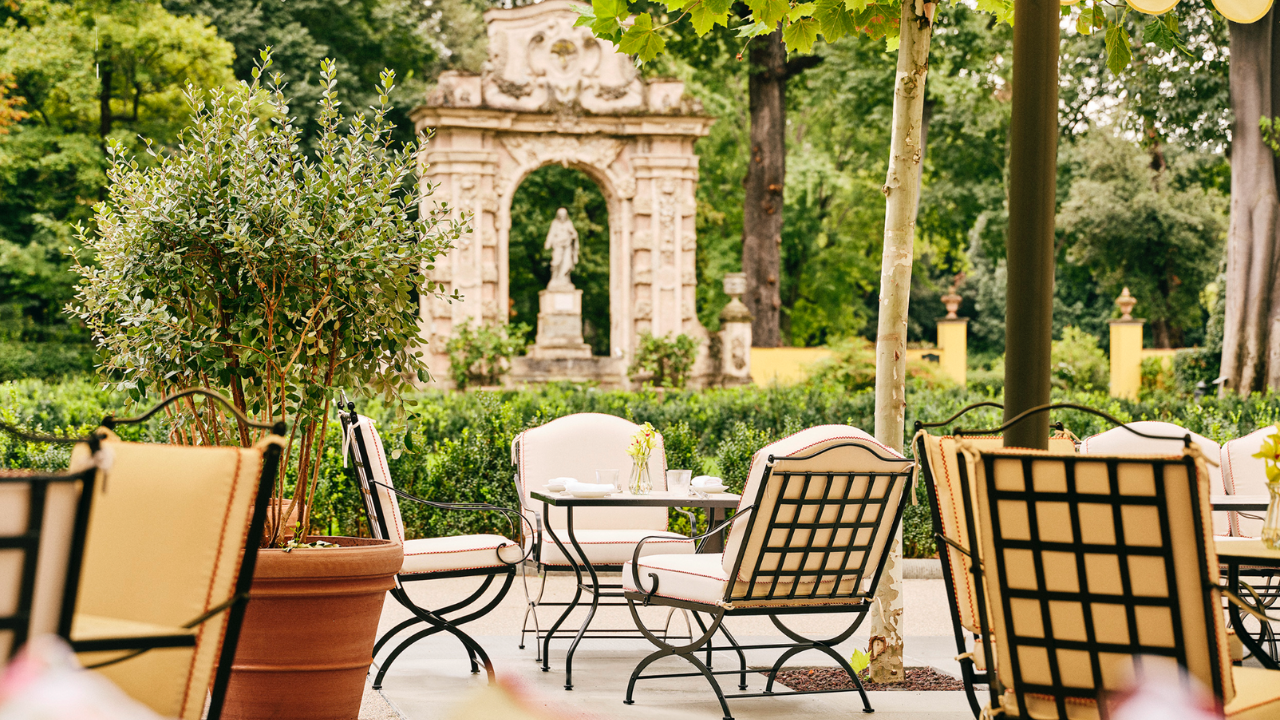
The Four Seasons staff perform a rare trick: invisibility. You never see them arrive, yet your water glass refills, your exact cappuccino order appears just as you think of it. Concierge can secure dinner at any restaurant in Florence, but their real talent lies in the off-script suggestions — a marble-paper atelier tucked behind Piazza Santa Croce, or a shoemaker who still measures feet with silk tape.
It’s a hotel that attracts a particular species of traveler: old-school aristocrats, discreet Americans, and the occasional fashion editor. Locals drop by for lunch at Il Palagio or cocktails at Atrium, but mostly, guests keep to the garden — a parallel Florence where time moves in tailored linen.
Departure: Leaving the Frame

On my final morning, I walked the garden one last time. A faint mist hovered over the lawn. The city was waking, but here, silence persisted. I passed the small temple, the fountains, the trees that had seen Medici banquets and popes, railroad clerks, and now, me — an intruder in borrowed serenity.
As I checked out, the same porter smiled and said, “Until next time, Signore Ruff.”

Outside the gates, Florence returned to its familiar tempo: motorbikes, espresso, sunlight on stone. But the hush of that garden — that impossible, suspended quiet — followed me.
Because that’s what the Four Seasons Firenze offers in the end: not escape, but reprieve. A pause between centuries. A reminder that in this city of masterpieces, sometimes the best art is knowing when to simply be still.
Verdict: For those who want Florence without fatigue, frescoes without frenzy, and glamour with a knowing wink.














